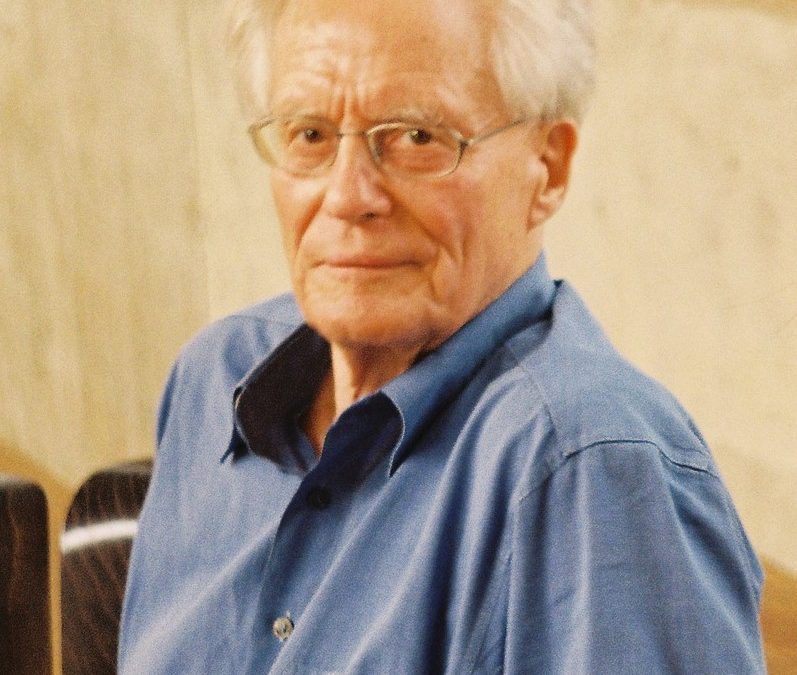
Fritz Stahlecker – a lawyer of the horses
Devoted to painting as well as to the horses
my life, my purpose and aspiration
(Fritz Stahlecker)
Fritz Stahlecker – a lawyer of the horses
He was a lonesome fighter, a man who often felt lonely with his views. He did not let himself be diverted from his path. Very early in the morning he worked with the horses according to his HSH-method to prepare them carefully for riding. When no one spoke of “motivating horses” yet he took advantage of the playfulness, the curiosity and willingness to learn of the young horse. He wanted to put something against training by dominance and learning by avoiding pain. He was way ahead of his time.
An engineer by profession, his technical understanding was ideal when it came to developing a comfortable saddle for the horse, creating the conditions necessary for ground work: a padded cavesson that would make the horses feel good – or a horse-friendly curb bit in which the technical defects of the convention bit were eliminated.
Seeing horses as partners, not taking away their splendor and playful ease, yet claiming their mind as early as possible was his concern. He had in mind to form horse and rider to a harmonious piece of art.
Riding as an art instead of show
Weyden, who was part of the team winning the bronze medal under Sven Rothenberger in Atlanta, was his best known horse trained according to his method. Numerous other horses were successful after having gone through his profound education up to the Grand Prix level. Fritz Stahlecker was not ready to seek success at any price. He wanted to get the dressage scenary out of the dead end of violent riding. “The purpose does not justify the means, the way and the goal must be subject to the same criteria, the careful, respectful treatment of the partner horse.” The aim of his hand-saddle-hand method is to prepare the young horse form the ground for the later expected dressage lessons when riding but in order to spare the young horse’s mouth to train without bit and without rider’s weight. With this gentle early imprint he managed to achieve a partnership with the horse on the ground, which paid off lateron in the saddle in an almost invisible communication with a sensible, sensitive horse and so in the harmony he longed for.
He worked tirelessly on how to steer the sport of dressage back on its feet, how to show more respect to the horse and how to put harmony and riding as an art into the first place instead of competitive sport and show.
Reverence for life
His guideline has always been the credo of Albert Schweitzer, the reverence for life – both humans and animals. In the face of the changing world, he demanded that everyone should consider themselves, that we should all be called to develop a new ethic to overcome violence. His riding philosophy he always led back to the observation of horses in freedom, in their natural behavior. And beyond the horses, he extended the ethics of Albert Schweitzer to all living things. Man should be aware of his responsibility as guardian of nature, as guardian of the diversity of life. Again and again he asked the question: Why is there so much beauty in nature, what is the purpose of it? Seeking an answer, he was confident that there was a sense for it, even if only God knew him.
Tradition and renewal
With the respect for the animal, he also saw it as a necessity to question the traditional again and again. “What everyone does is not necessarily right,” he said. He had developed an extensive knowledge of old riding masters, especially the French school, which he also repeatedly reminded. And yet he had the opinion that it is not about preserving the tradition unseen, but to keep a critical view on it and modify it by new findings, be it technical possibilities, be it from animal psychology or other areas.
He had to face a lot of criticism, he never let himself be discouraged. His profound knowledge could not be ignored. Anyone who had the chance – and people came to him from all over the world – to get to know him better, was impressed by the immense wealth of riding knowledge and experience he readily passed on. Pupils remember him wistfully – his almost unique riding lessons with his own ideas, his valuable hints on using his hand-saddle-hand method, offering unexpected solutions to problems – and never giving up.
Riding as an art, as a search for meaning, as creative thinking
Riding for pleasure was not sufficient for Fritz Stahlecker, for him riding was an artistic challenge and a school of life. He saw the rider in a creative empathy for the horse, as well as being guided by the horse. But relying solely on the feeling was not enough in his eyes. “The head must be in order,” he said. First and foremost, riding is a brain challenge and requires an inner readiness to correct oneself, to learn. “Think differently, ride differently” was his motto, which led him to recall things that had fallen out of sight, but also to break new ground.
Painting and riding – parallels with nature
Fritz Stahlecker was interested in aesthetics in riding as well as in his painting. In his view, aesthetics has its origin in nature and the goal of the rider is to stay close to it. In dressage as in painting he sought parallels with nature, aesthetics and ethics were inseparable for him. “Only what looks good is good too.” When he was no longer able to do anything for the horses, he put all his energy into his painting and created paintings of incredible luminosity and intensity. “All art unites the people, brings them together internationally, as well as the world of equitation,” he wrote and this unifying element, to enter for a spiritual change, was his hope. Despite constant pain, his joy in nature and in her eternal change was a source of strength for him.
His legacy
Reitmeister Lörke was a role model for Fritz Stahlecker and yet he went his own way, in painting it was mainly Picasso, Van Gogh, but also many other modern painters, which he thought about – and yet he strove for a painting style, which should stand out from anything else.
He confessed frankly that he had come a long way in his manner of riding until he came to his demand for even finer riding, even more sensitive communication with the horse. Man must continue to work on himself, must keep his ideals in view, even if he does not reach them. Humility has been an important term for Fritz Stahlecker in recent years. Humility towards the creation of God, towards the beauty in the world. As long as man is ready for mental change and critical questioning of his own actions, there is also hope for improvement in our world. And he kept that hope until the last day. If one wants to see a role model in Fritz Stahlecker, then it was certainly his attitude of often making a halt, questioning himself, his commitment to animal welfare and his search for balance, for harmony, without giving up his principles.
